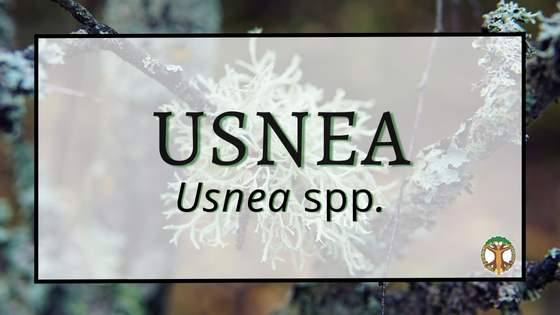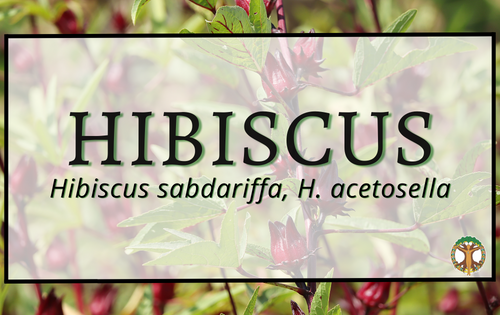
Usnea
Contributed by Community Herbalist Program Student, Kelsy Provost
Latin Name: Usnea spp.
Common Names: Usnea, Beard Lichen, Old Man’s Beard, Lungs of the Forest
Family: Parmeliaceae
Habitat: In FL commonly found on oak trees, elsewhere on conifers and hardwoods.
Growth: Often only about an inch or so around and tuffs of hair, or beard. Some may confuse with Spanish moss, but it has one key difference. Usnea has a white inner cord that when tugged has an elasticity to it that other similar things do not. Spanish moss has a black inner cord.
Parts Used: The whole lichen
History/Tradition: Usnea’s nickname, “lungs of the forest,” comes from its sponge-like action to absorb airborne particulates. However, this means that it’s susceptible to over-pollution. In fact, it’s believed that when lichens like Usnea disappear, it’s a warning that the air quality in the area is harmful.
Usnea is the Latin form or the Arabic word for moss: ushnah.
It’s thought that Usnea was used as the first form of tinsel to decorate holiday trees in Northern Europe.
Because of the discovery and successful use of penicillin in World War II, there was a lot of interest in lichens and their medicinal properties.
Energetics: Cool and dry. Slightly bitter and sweet.
Indications: As a cooling, drying, and bitter lichen. Usnea helps contract, detoxify, stimulate, clear, and center the body systems.
Systems: Clears heat, moves dampness, and can help resolve toxicity. Often used when there are signs of excess heat due to irritation or infection.
Actions: Antibacterial, antibiotic, anti-fungal, anti-parasitic, antiseptic, bitter, vulnerary (helps heal wounds), and immune tonic. Usnea has a particular affinity for supporting the lungs and urinary tract. This lichen can help support individuals facing a wide range of illnesses and infections like pneumonia, urinary tract infections, sore throat, fungal infections, vaginal infections, sinus infections, colds, flu, mastitis, boils, and more.
Cautions: Usnea is generally considered safe; however, it’s advised not to use it during pregnancy or nursing.
⚠️ If you’re considering wild harvesting, please note that there are many different types of lichens, so it’s vital to always be 100% positive of your identification before harvesting and using.
Additionally, there are warnings about liver toxicity while using Usnea, but these are related to isolated usnic acid, not whole plant matter.
If a skin reaction or contact dermatitis occurs, discontinue use.
Constituents: Usnea is relatively low in acids. It’s mainly made up of carbohydrates and is very high in vitamin C.
Culinary Use: Don’t consume in large amounts raw as it can irritate the gut.
Other Uses: Because the herb isn’t water soluble, it’s best to prepare an alcohol tincture or create an oil or salve. Usnea works wonderfully as a topical salve, or a nasal and throat spray.
Because of the plant’s unique, hair-like structure, it can be used topically to heal surface wounds. You can also apply the diluted tincture to help clean wounds or support healing skin infections and irritations.
Disclaimer: This content is intended for educational purposes only. Please consult your healthcare provider before making changes based on the material.
References:
https://www.herbrally.com/monographs/usnea
https://enchantersgreen.com/usnea?rq=usnea
https://www.herbalremediesadvice.org/usnea-herb.html
https://www.eattheweeds.com/usnea-food-and-pharmacy-lichen/
https://grassrootsremedies.co.uk/herb-profile-old-mans-beard-lichen/






